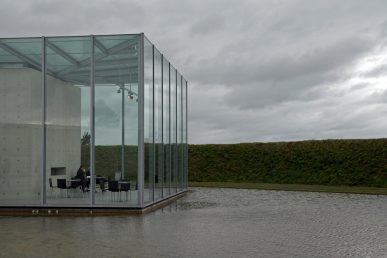Elizabeth K. Joseph has always wanted to move things with her mind, but for now, she is moving to empower women in OpenStack. Since joining Hewlett Packard Enterprises in 2013, she has been a contributing member of the OpenStack Infrastructure Team and continues to be a voice in gender equality in the technology field with the Women of OpenStack.
She talks to us about her role in the OpenStack community, why infra matters and bringing open source to new audiences.
If you could be a superhero, what would your superpower(s) be?
My nickname on IRC is "pleia2," as in Princess Leia from Star Wars, so probably telekinesis. I want to move things with my mind, The Force style! Plus, it would be really helpful for moving and dealing with luggage.
What’s your role (roles) in the OpenStack community?
I work for Hewlett Packard Enterprise (HPE) as a core member of the OpenStack Infrastructure team, which I joined at the beginning of 2013. A Linux systems administrator by trade, I work on the team to run the fleet of Linux-based servers that the OpenStack developers interact with every day. This means the servers running the continuous integration services (Gerrit, Zuul, Nodepool), plus all the other platforms OpenStack developers interact with, from the Etherpad to the IRC bots and tooling for translations.
We also adhere to an open source model with the infrastructure, which I’m really proud of. Every change we make is stored in public git repositories. Plus, just like every other project in OpenStack we require review and automated testing before a change is merged. We also follow the specification process like the rest of the project, which helps our team make decisions about where we should be spending our time. The services we run are documented here and our specs are available here.
There are always a lot of debates in the OpenStack community – which one is the most important, now?
As a member of the infrastructure team, I’m most interested in discussions centered around how an increasing number of projects in the Big Tent are using the infrastructure. The infrastructure team is growing (I’m thrilled to say that Ricardo Carrillo Cruz of HPE and Ian Wienand of Red Hat have just joined us as core members this month), but not fast enough to keep up with the demand on our services.
We need more companies and organizations making a commitment to supporting the OpenStack Infrastructure if we’re going to continue to provide services to all these projects or we’ll need to make hard decisions about what we can realistically support given our current workload and limited staff.
What obstacles do you think women face when getting involved in the OpenStack community?
The vast majority of obstacles that women face are the same as anyone joining the OpenStack community. The tooling takes some time and patience to learn, and submitting your first patch can be intimidating, particularly as you suddenly have strangers reviewing your work in public! Even as someone who has done a lot of work in open source for many years, it took time for me to get used to it.
Drilling down into specific challenges women face, I’d say a big one is not seeing many women in leadership positions in the project. It can be difficult to see yourself succeed when you don’t see other people of your gender is blazing the trail ahead. Things are slowly shifting, and with women-focused events and panels at events like the OpenStack Summit we are highlighting the work of more women and it feels like more are participating in the project than when I began.
Women in technology also frequently find that it can be difficult to find mentors in their workplace and throughout their career, which trickles down to involvement with OpenStack. Over the past couple years I’ve mentored several women in the community through formal mentoring programs and also more casually, but that work hardly puts a dent in the number of women who want to participate and need guidance. Formal programs like Outreachy and the Google Summer of Code need men and women to help as mentors. My employer, HPE, has also supported few rounds of a scholarship program for women in college who wish to work on OpenStack.I’ve been honored to serve as a mentor for this program and just recently saw the final presentation from one of the students who had been working on the Horizon dashboard.
You tweeted about presenting at the Twenty Eighth South Asia Network Operators Group (SANOG 28) in early August. Can you give a brief preview of what you will speak about?
As someone who usually speaks at open-source conferences, I’m very excited to be reaching a different audience with my upcoming tutorial at SANOG 28. Rather than folks with an open-source background, I’ll be speaking to network professionals in south Asia who are building the networks for some of the largest and fastest growing metropolitan areas in the world.
As I introduce OpenStack to these folks, I’ve designed the tutorial to be broken up into three phases:
- An introduction into various ways OpenStack can be used, from high-functioning fleets of compute nodes to block or object storage arrays to managing a datacenter with bare metal tooling. This introduction will also present the audience with examples of organizations who are using it for all these things in production. I admit that I’ve depended upon OpenStack Summit keynote presentations to find these examples.
- A series of demonstrations of each service I’m covering using the Mitaka branch of DevStack as a base, for simplicity’s sake. I’ll walk them through how to spin up an instance, create and mount a block storage device on an instance, how to upload and retrieve files from object storage and more.
- The tutorial will conclude by talking about some of the official tooling now available to move from tests in DevStack to starting a deployment in production. Starting with configuration management, OpenStack now has Puppet, Chef, Ansible and Juju as projects are governed by the OpenStack Technical Committee. Beyond specific tooling, I’ll also talk about some of the team member expertise and decisions that will need to be made when an organization approaches the deployment and maintenance of OpenStack.
The audience members will have my slides and DevStack instructions for various services to go home with so they can learn more at work and home.
There are many efforts to get women involved in tech, what are some initiatives that have worked and why?
I mentioned mentoring already, but I really believe in those programs. Having supportive mentors who can help you through new challenges and promote your work is incredibly valuable. Sometimes you just need someone who you know you can ask for help from without feeling self-conscious about it. Or someone who will encourage you to submit a talk to a conference (like the OpenStack Summit!) and help you find the resources you need to write your presentation and give the talk. The confidence that a good mentor can provide can make a world of difference.
Why do you think it’s important for women to get involved with OpenStack?
Studies have shown that diverse groups are better at solving problems. People of different genders, cultures and race bring different perspectives and ideas to the table. Difference invites us to think beyond the needs of people in our own countries and life situations solving the needs that we have.
We want OpenStack to be the best product out there for organizations looking to build clouds, so we should set ourselves up for success by fostering this valuable team diversity.
As for individual women, there is an incredible amount of personal growth to be gained by becoming a contributor to the OpenStack project, whether you’re an operator, developer, translator, technical writer, project manager or any of the other various roles we have in our community. Cloud a fast-paced ecosystem with a vast marketplace of companies hiring for a variety of positions and now is great time to have OpenStack experience on your resume.
_This post is part of the Women of OpenStack series to spotlighting the women in various roles in our community who have helped make OpenStack successful. With each post, we learn more about each woman’s involvement in the community and how they see the future of OpenStack taking shape. If you’re interested in being featured, please email [email protected]._
Cover Photo // CC BY NC
- Fighting for usability in the open source community - February 20, 2017
- How to take a leadership role in OpenStack - December 22, 2016
- OpenStack Community Contributor Awards recognize unsung heroes - October 28, 2016

)










